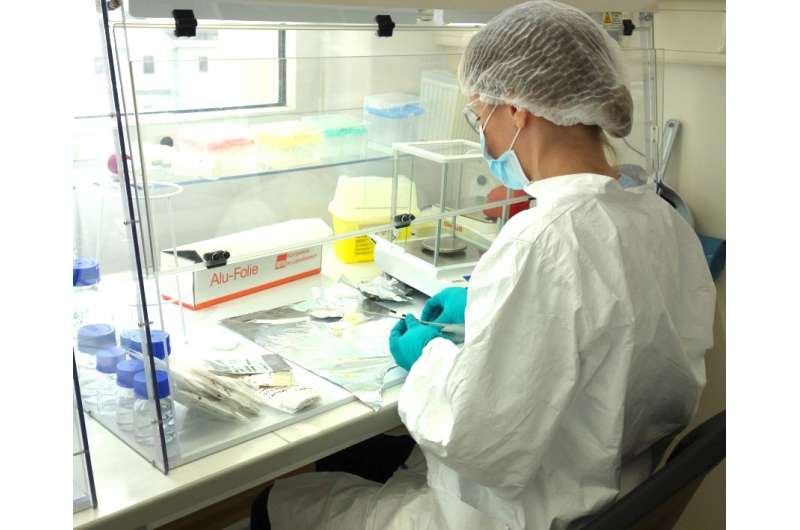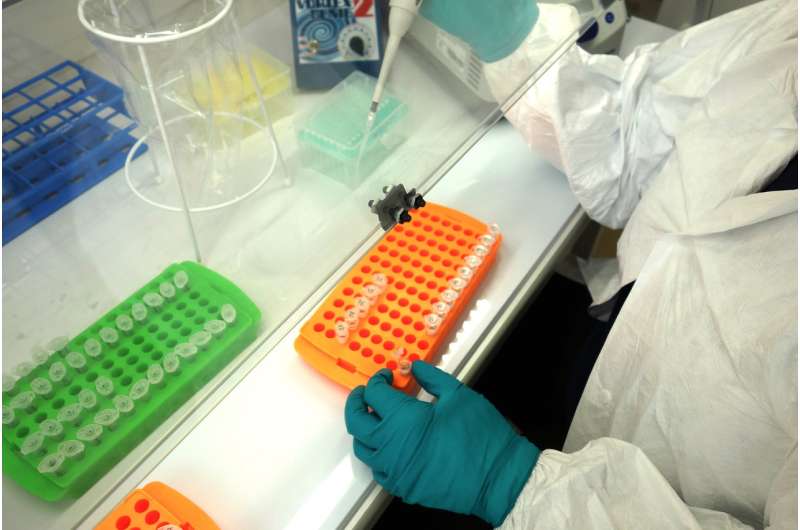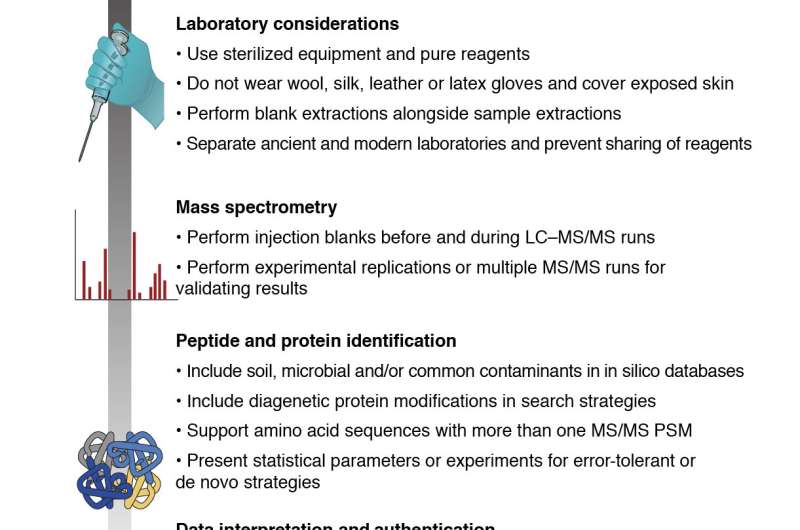New standards for ancient protein studies set forth by multi-national group of researchers

A team of researchers from institutions at the leading edge of the new field of palaeoproteomics have published guidelines to provide it with a firm foundation. Ancient proteins are used to study everything from extinct species to ancient human diets to the evolution of diseases, and more. The guide, published in Nature Ecology & Evolution, aims to support good practices in the field and to ensure the generation of robust, reproducible results.
The field of palaeoproteomics - the analysis of ancient proteins - has jumped into the spotlight in recent years. Preserving ten times longer than DNA, ancient proteins offer scientists a unique glimpse into the distant past. New technologies have made this work increasingly powerful, and its results increasingly detailed. Scientists can now use trace amounts of archaeological proteins to reconstruct the relationships of extinct megafauna, track the spread of dairying in prehistory, and characterize immune responses in people who died thousands of years ago. This has allowed researchers to better answer a range of questions, from the evolution of extinct species, to the reconstruction of past human diets, to a better understanding of chronic diseases.
A set of guidelines to provide consistency to a new field
As a young discipline, palaeoproteomics faces many of the same obstacles that once challenged the field of ancient DNA, namely a lack of consistency in data reporting standards, authentication measures, and procedures taken to avoid contamination. Without rigorous standards, lab contamination and data artifacts can be easily misinterpreted, leading to false claims. In this publication, the authors set forth a number of "best practices" for the sampling, generation, analysis, and reporting of ancient protein sequence data in the scientific literature in order to support researchers, reviewers and editors. The team is notable as it includes international researchers from many of the top universities and institutes operating in this new field, including the Max Planck Institute for the Science of Human History, the Max Planck Institute for Evolutionary Anthropology, the University of Copenhagen, the University of York, the University of Turin, the University of Oklahoma and the University of Zürich/ETH Zürich.

The authors emphasize that they do not intend to create rigid, unbendable rules, or to overturn existing standards, but rather to consolidate and strengthen the field's best practices. "Undoubtedly, as new laboratory and statistical strategies for characterizing proteins emerge, these guidelines will require debate within the community and further updating," states co-lead author Frido Welker, of the Max Planck Institute for Evolutionary Anthropology. "However, we hope that the standards of practice presented here will help to provide a firm foundation for palaeoproteomics as a technique for use in a variety of fields."
Harnessing the potential of new methods
In particular, the researchers stress that publications must at a minimum provide adequate details on how data were generated and authenticated, so that others can effectively evaluate the results. "Palaeoproteomics holds enormous potential to dramatically expand archaeological, palaeontological and evolutionary research," explains co-lead author Jessica Hendy, of the Max Planck Institute for the Science of Human History. "It is crucial that the discipline hold itself to high standards in order to ensure that it is able to meet this potential."

More information: A guide to ancient protein studies, Nature Ecology & Evolution (2018). nature.com/articles/doi:10.1038/s41559-018-0510-x
Journal information: Nature Ecology & Evolution
Provided by Max Planck Institute for the Science of Human History


















